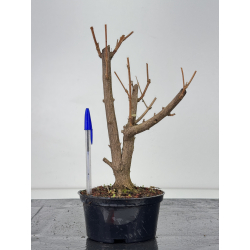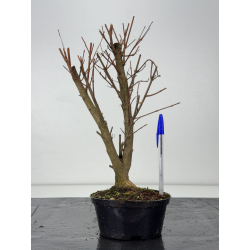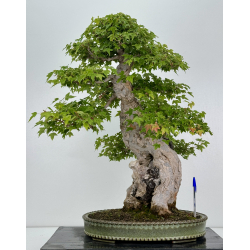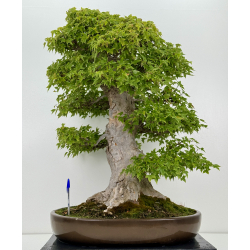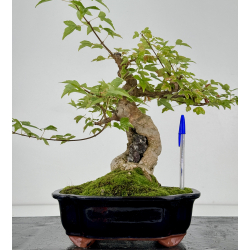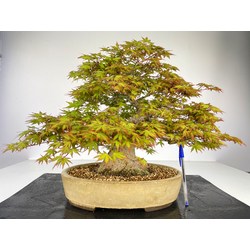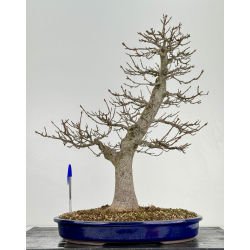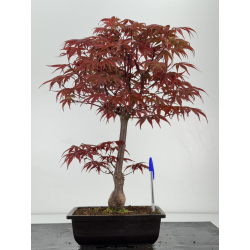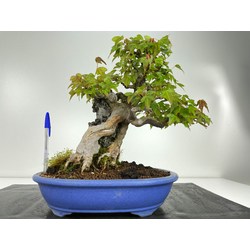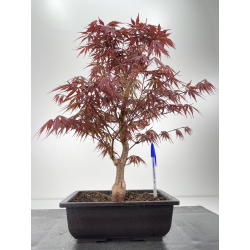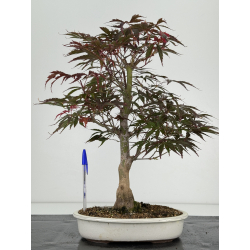ARCES
It is a genus that is composed of about 160 species (many of them natural hybrids) and numerous varieties obtained by man.
The maples have opposite leaves, which, given their varied autumn tints (red, yellow orange...), give them a great ornamental value.
They are species widely used both in gardening and in bonsai, in fact, they are among the most loved, cultivated and extended for this use, especially acer buergerianum and acer palmatum, with its wide range of Japanese varieties (arakawa, shishigashira, kiyohime, deshojo, kashima, yama-momiji, seryu, tsuma-beni, seigen, sango-kaku...) very commercialized both in Japan and in the West. Another species used as bonsai, is the country maple, very extended in Europe and that you can also find in our store.
We all think it is wonderful to have a maple bonsai in our terrace or garden, but we must take into account that it requires specific care to keep it completely healthy, although if you follow our advice you will see that it is quite easy.
It has to be always outdoors, in full sun all the year except the hottest months, in summer it is essential to place it in the shade, mainly if it is a very dry place, so that the leaves do not burn.
The substrate must have a good drainage, but it should never lack water, generally, we water when the superficial layer of substrate is dry, but it still has humidity in the pot. In hot summers it may require more than one watering a day. However, when winter arrives, being a deciduous tree, we reduce the watering.
It is transplanted every two or three years, when we see that the soil has degraded and no longer drains well, to a mixture of akadama and kiryu; the proportions of these substrates will depend on the size of the pot and the moment of formation in which our maple is, usually varies between 75-80% of akadama and 25-20% of kiryu. If you have problems with heat or environmental dryness, you can add a little coconut fiber or topsoil to retain more moisture in the pot, but in a small proportion to avoid caking the substrate.
If you do not have problems with watering, they do very well in glazed and flat pots, but never sacrifice cultivation for aesthetics, since in this type of container the soil dries out very quickly.
In Laos Garden you can find a wide variety of maples, both native and imported from Japan, as well as everything you need for their cultivation.

